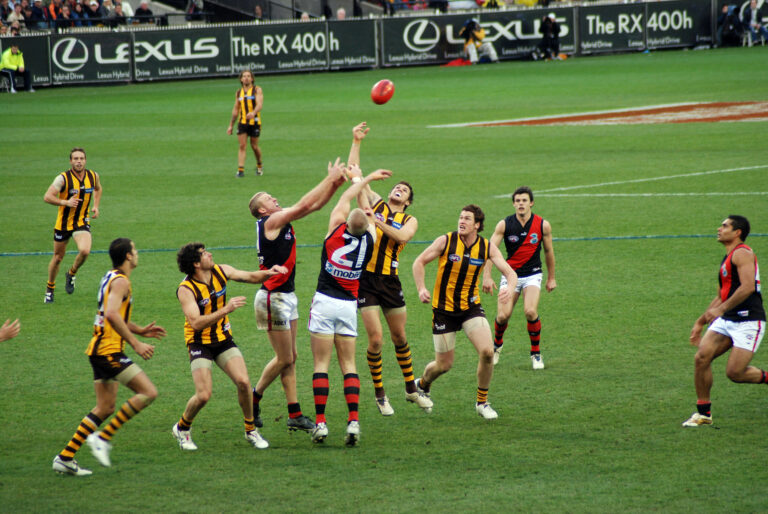General Rules of Paddleball (1 Wall)
As you step onto the paddleball court, understanding the court dimensions and markings is essential. Serving rules and positions play a significant role in the game, influencing the flow of play. However, there is more to the game than just serving. Stay tuned to discover the intricacies of the scoring system, boundaries, and equipment requirements that impact your gameplay experience. The rules go beyond the basics, shaping player conduct and etiquette. Let's unravel the layers of paddleball regulations together.
Court Dimensions and Markings
When you step onto a paddleball court, the dimensions and markings around you provide the framework for the game. The standard dimensions of a paddleball court are 20 feet wide by 34 feet long, with a front wall that is 20 feet wide and 16 feet high. The court is divided into two equal halves by a line running parallel to the front wall, known as the short line. This line helps players position themselves correctly during the game.
Player positioning is vital in paddleball. When the game starts, each player must stand behind the short line on their side of the court. This initial positioning sets the stage for the game, allowing players to cover the court effectively and respond to their opponent's shots. As the game progresses, players move dynamically, adjusting their positions based on the ball's trajectory and their opponent's movements.
Understanding the court dimensions and player positioning is essential for mastering paddleball. By familiarizing yourself with the dimensions and markings of the court, you can anticipate shots better and strategize your moves effectively. Proper player positioning ensures that you can reach the ball swiftly and maintain control during rallies. So, next time you step onto the paddleball court, pay attention to the dimensions and markings around you—they hold the key to your success on the court.
Serving Rules and Positions
Moving on to the serving rules and positions in paddleball, understanding these aspects is fundamental for a successful game strategy and gameplay. When it comes to serving in paddleball, there are specific techniques and player rotations that players need to be aware of to excel in the game. Let's explore these essential aspects through the following table:
| Serving Techniques | Player Rotations |
|---|---|
| – Overhead Serve: A powerful serve executed above the player's head. | – Players must rotate serving positions after scoring points. |
| – Underhand Serve: A strategic serve done below the waist, often used for control. | – The server should rotate positions in a clockwise direction. |
| – Sidearm Serve: A versatile serve where the ball is hit from the side of the body. | – Rotation continues until the serving team loses a point. |
| – Lob Serve: A high-arcing serve aimed to bounce near the back wall. | – Each player gets a chance to serve before rotating out. |
| – Drive Serve: A flat and fast serve intended to catch opponents off guard. | – Maintaining proper rotation guarantees fair play and equal opportunities. |
Mastering these serving techniques and understanding player rotations will enhance your paddleball game, leading to more strategic plays and a competitive edge against your opponents.
Scoring System and Winning
To understand the scoring system and how to win in paddleball, familiarize yourself with the following key rules and strategies. In paddleball, the scoring system is straightforward. Points can only be scored by the serving team. If the receiving team wins the rally, they do not earn a point but instead get the chance to serve. The game is usually played to 15 points, but players can agree on a different winning score before starting.
One important game strategy is to focus on your serving technique. A strong serve can put pressure on your opponents right from the start. Aim for corners and try to vary the speed and placement of your serves to keep your opponents guessing. Additionally, communication with your partner is key. Work on establishing a good understanding of each other's strengths and weaknesses to create a seamless playing style.
Another essential aspect of winning in paddleball is maintaining a strong defense. React quickly to your opponent's shots and try to anticipate where the ball will go next. Positioning yourself strategically on the court can help you cover more ground effectively. Remember, in paddleball, consistency is key. Avoid unforced errors and focus on keeping the ball in play to wear down your opponents.
Out of Bounds and Faults
Alright, let's talk about the POINTS in paddleball. These are essential to understand as they involve boundary lines, faults, and penalties. Knowing these rules will help you play the game effectively and avoid making mistakes that could cost you points.
Boundary Lines
When playing Paddleball (1 Wall), understanding the boundary lines is essential to avoid faults and staying in bounds during the game. Here are some key points to keep in mind:
- Line disputes may arise; it's your responsibility to communicate effectively with your opponent.
- Be fair in your line calls; sportsmanship expectations are high in Paddleball.
- Stay alert to where the boundary lines are located to avoid stepping out of bounds.
- Remember, staying within the lines not only prevents faults but also showcases your skill and precision in the game.
Knowing the boundaries well enhances your gameplay and fosters a respectful environment on the court.
Faults and Penalties
Understanding the boundary lines in Paddleball (1 Wall) is key to avoiding faults and penalties, particularly when it comes to being out of bounds. Player behavior and sportsmanship play a significant role in determining avoidable faults and maintaining fair play on the court. When a player steps outside the designated court boundaries, it results in an out of bounds fault. This can lead to penalties or the loss of points depending on the rules of the game. To uphold fair play, respecting the boundaries, staying within the court limits, and playing with integrity are crucial. By being mindful of the boundary lines and practicing good sportsmanship, you can enjoy a competitive game of Paddleball while avoiding unnecessary faults and penalties.
Equipment Specifications and Requirements
To fully participate in paddleball (1 Wall), players must adhere to specific equipment specifications and requirements. Ensuring your gear meets the necessary standards is vital for an enjoyable and safe game. Here are some key points to ponder:
- Equipment maintenance, durability: Keeping your paddleball equipment well-maintained is essential for longevity and peak performance. Regularly check your paddle, ball, and protective gear for any signs of wear and tear. Replace any damaged items promptly to prevent accidents during play.
- Safety precautions, guidelines: Prioritize safety by using appropriate gear such as eye protection to shield your eyes from fast-moving balls. Additionally, wearing supportive footwear can help prevent injuries while moving swiftly on the court. Always follow safety guidelines to minimize the risk of accidents and ensure a smooth gameplay experience.
- Proper paddleball attire: Opt for comfortable clothing that allows for ease of movement on the court. Breathable fabrics can help regulate body temperature during intense matches. Choose non-marking shoes to maintain the court's surface integrity and prevent slipping.
- Ball specifications: Use regulation paddleball balls that meet the required size, weight, and bounce standards. Using the correct ball ensures fair gameplay and consistency in performance.
Player Conduct and Etiquette
Maintain a respectful and sportsmanlike demeanor while engaging in paddleball matches to uphold the spirit of fair play and camaraderie on the court. When stepping onto the court, remember that sportsmanship guidelines and behavior expectations are essential in fostering a positive playing environment. As a paddleball player, it is essential to abide by a code of conduct that promotes fair play, integrity, and respect for your opponents and fellow players.
Player interactions play a significant role in the overall experience of a paddleball match. Treat your opponents with courtesy and respect, whether you win or lose. Congratulate them on good plays and maintain a positive attitude throughout the game. Avoid engaging in unsportsmanlike behavior such as taunting, trash-talking, or making derogatory remarks towards other players. Remember, paddleball is not only about showcasing your skills but also about building connections and enjoying the game with others.
Respecting the rules of the game and the decisions made by referees or officials is vital. Accept both victories and defeats graciously, understanding that they are part of the sport. By embodying good sportsmanship and adhering to the code of conduct in all your player interactions, you contribute to creating a welcoming and enjoyable paddleball environment for everyone involved.
Frequently Asked Questions
Can Players Wear Any Type of Footwear on the Court?
When you step onto the court for a game of paddleball, remember that proper footwear is important for your safety and court decorum. Make sure to check the shoe requirements to stay in the game!
Are There Any Restrictions on the Type of Paddle That Can Be Used in Paddleball?
When it comes to paddleball, you have freedom in choosing your paddle as long as it meets the equipment regulations. Different types of paddles are allowed, giving you the chance to find your perfect fit.
Is There a Time Limit for How Long a Player Can Take Between Serves?
When playing paddleball, time management is key. The time limit between serves can make a difference in your game strategy. Stay focused, mentally prepared. Quick serves can keep your opponent on their toes, giving you an edge.
Are Players Allowed to Hit the Ball With Any Part of Their Body Besides the Paddle?
In paddleball, you can hit the ball with any body part, adding unique spins to your shots. This freedom boosts your ball control and strategic plays, making body shots a thrilling and effective part of your game.
Can Players Request a Timeout During a Game?
During a game, you can totally ask for a timeout. It's a smart move for regrouping, strategizing or catching a breath. Communication and team cohesion improve with these timeout rules, making your gameplay more effective.






